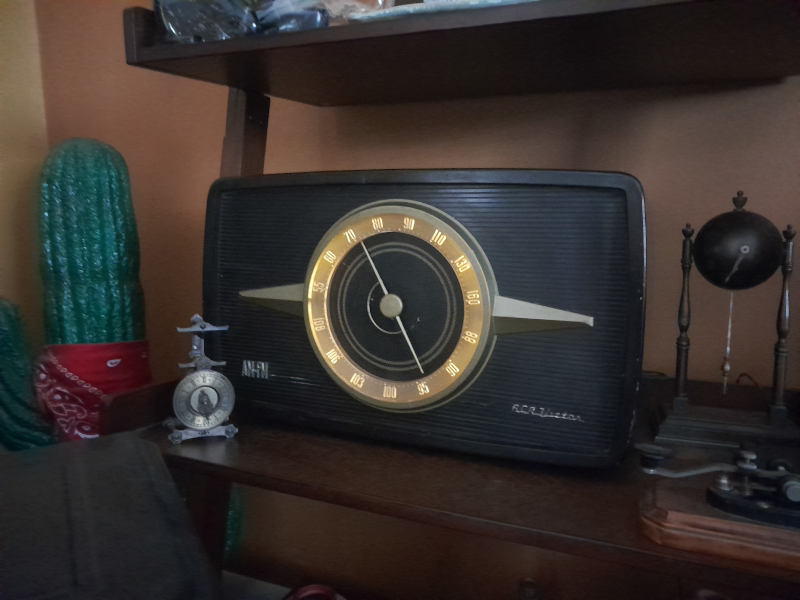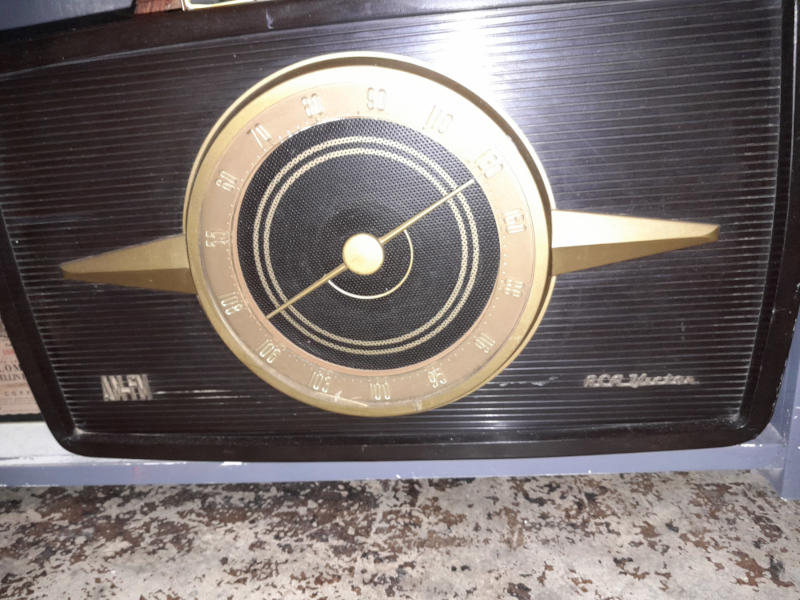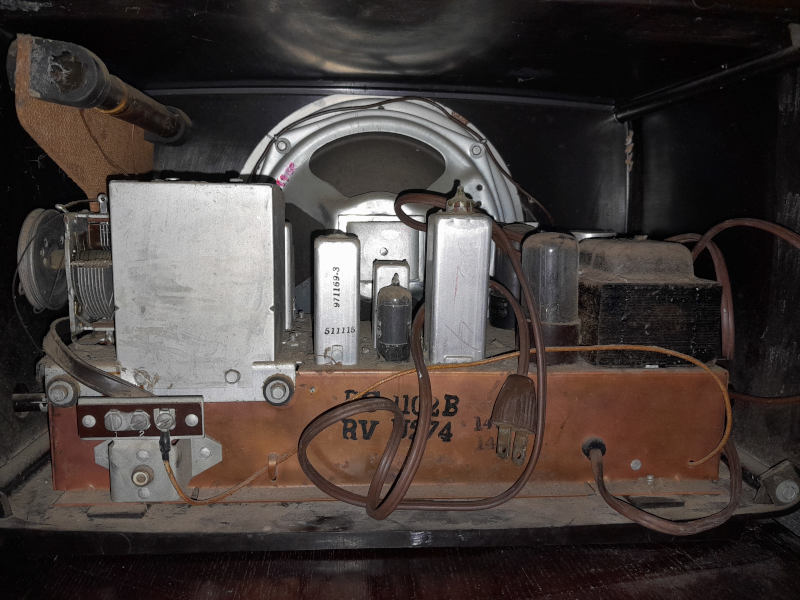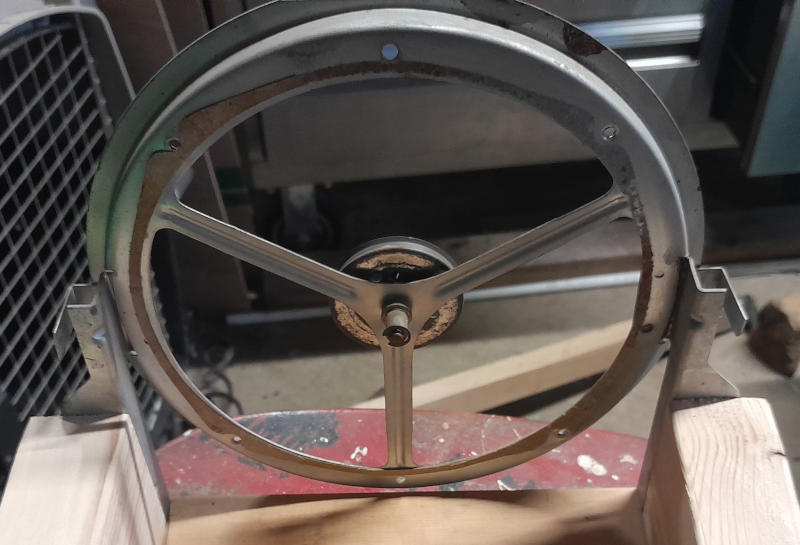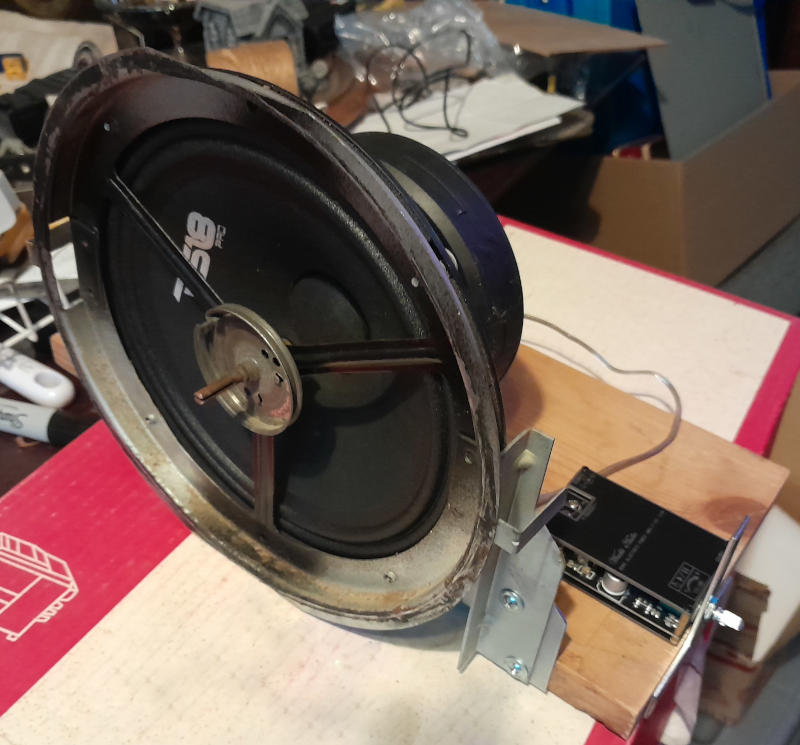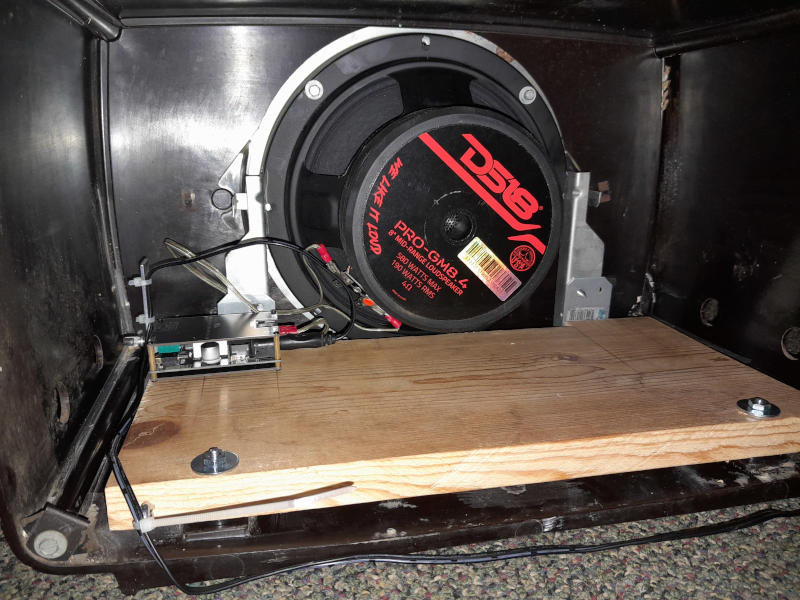I discovered this 1951 RCA 1R81 AM/FM radio in a local antique mall. the body was in excellent shape and the price was right, but I didn’t know what I would do with it, so I left it alone. Later that week, my wife reminded me about the radio again, so the next weekend we went over to pick it up.
When I got the radio home, I took a pic of the guts, didn’t look to bad from initial glance.
At the time I wasn’t sure if I wanted to restore it, which would be cool, but probably not used much, or if I wanted to convert it into a Bluetooth speaker. I mentioned it to the young man working the register at the mall, and he said either would be cool.
After pulling out the guts, it looked like someone had tried to restore it before, so I decided to go the Bluetooth conversion route.The only part of the insides I kept was the speaker ring, which not only held the speaker in place, but was used to attach the bulbs that would illuminate the dial, and the dial arm.
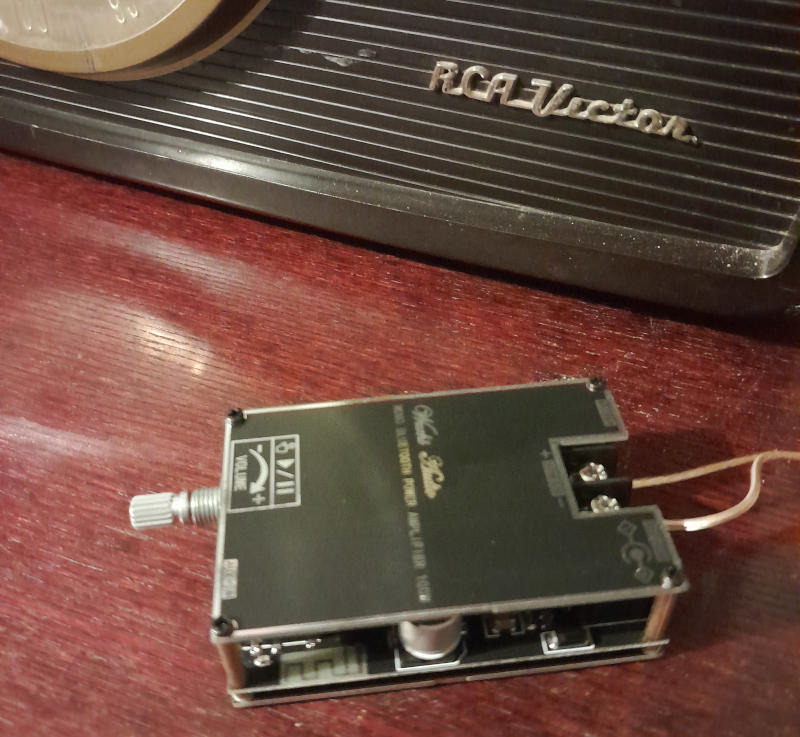
Initially I was thinking of setting up a Raspberry Pi to run the the whole setup, but quickly decided that would be overkill, so I hunted down a Wuzhi Audio ZK-1001B 100W Mono Bluetooth Power Amplifier Board for about $17. One nice thing about this amp is its volume control is separate from the phone’s volume control so I can set the “max level” on the amp and adjust accordingly on the phone.
Next on the list was to find an 8″ speaker, which I found a refurbished one on eBay for $26 (DS18 PRO-GM8.4 8″ Car Speaker 580 Watts 4-Ohm Mid-Range Loudspeaker). I had to do some modification to the speaker as the housing was designed for a speaker from 1951.
1) I had to shave some metal off of the sides to get it to fit inside the frame. My Dremel made quick work of that,
2) the hole pattern was not quite correct, so the upper two screws were used, while the lower ones were zip-tied into place.
As you can see, the way the frame was attached to the base in not the same as above, a lot of this project was done on the fly.
A few more zip-ties and the guts are complete. (It’s so empty)
The remaining piece of the puzzle was how to get the tuning dial to light up, the answer was found in some old battery powered Christmas lights. The strand was cut down to 5 lights, and the bulbs of the 3 center ones were removed, leaving the two good ones to be zip tied to the light posts. After that I cut a piece of press board to cover the back
In the end, it was a fun project, and we’ve listened to it quite a bit.
